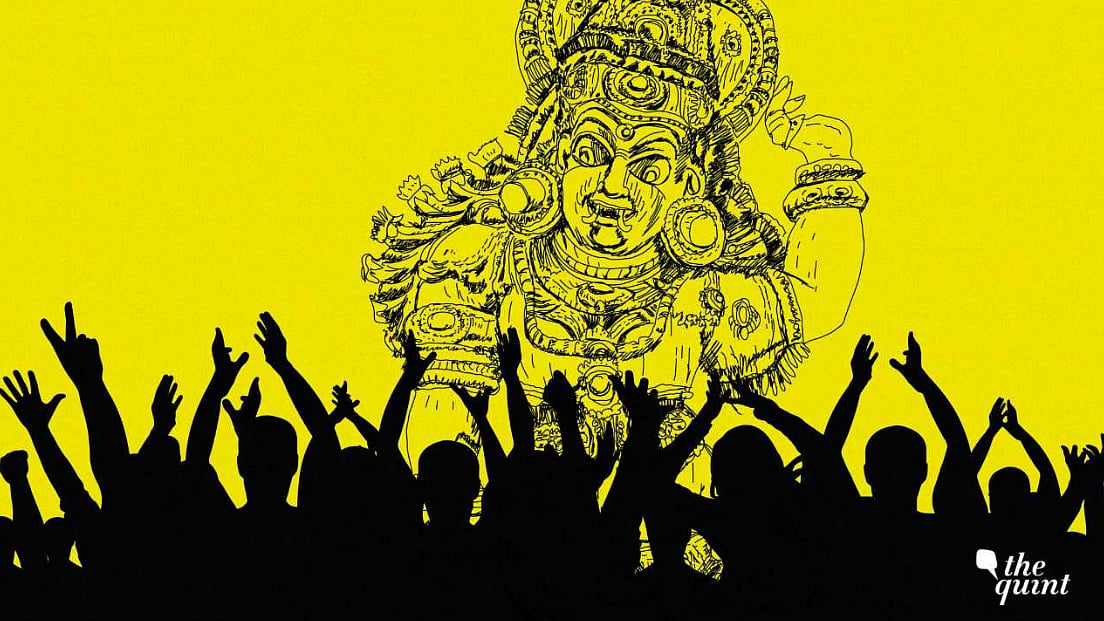Ma Durga is this Season’s Star, But Some Of Us Revere Mahishasura
What do followers of Mahishashur eat, or offer during the period of Navratri?

advertisement
Visit any Durga puja pandal on the afternoon of Navami, and you will come across scores of eager ‘devotees’ who are there just for the bhog (ritual offering made to gods).
The enthusiasm over the delicious khichdi, labra (a gooey mixed vegetable curry) and chutney — the essentials, according to bhog-lore — is apparent on social media too, as hundreds post their experiences, selfies even, of enjoying a good meal to their heart’s content.
But what of those who revere Mahishasura, and not his slayer, goddess Durga? What do they eat, or offer to Mahishasura during the period of Navratri? There are several such communities spread across the country — from tribal groups in West Bengal, Jharkhand, Bihar and Uttar Pradesh to lower caste communities in Karnataka.
Navigating the Asura
“There’s one important distinction we must keep in mind in this regard,” says writer and activist Asit Roy, who has lived in and travelled across tribal areas in eastern India, including with the late renowned writer and social activist Mahashweta Devi.
The Asura tribals spread across Jharkhand and West Bengal believe that Mahishasura, their ancestor, was killed deceitfully by an “outsider”, ie, goddess Durga. Similarly, the Munda, Oraon and Santhal tribals also revere Mahishasura.
They argue that the ‘Devi Mahatmya’ story of the ‘Markandeya Purana’, which describes the birth of Durga and her nine-day battle with Mahishasura, ending in the latter’s slaying, is but one version of the myth. Since it was committed to writing in a “sacred text” as opposed to being propagated orally, it has become a truism of sorts.
For Some Tribals, Durga Puja is a Period of Mourning
“For many tribal groups, the Durga puja period is one of mourning,” says Roy. “During the days of the puja, men from tribal villages in Bengal and Jharkhand dress up as women and do a ritual dance called Ghuang, travelling from place to place. This is part of their traditional practice.”
In some parts, a communal meal is part of the mourning. “For instance, in Gumla, Latehar and surrounding districts of Jharkhand and West Bengal, almost every forest village has a symbolic pind (place for burial of a deceased’s ashes), where the villagers congregate for a puja on Navami or Diwali,” says Ranchi-based writer and activist Aloka Kujur, who has participated in several such programmes over the last few years.
Although the sacrifice (and eating) of buffaloes, signifying the ‘demon king’, during Durga Puja is common in parts of Jharkhand and West Bengal, communities that revere Mahishashur do not slaughter the buffalo. “In some places, a buffalo calf, signifying our ancestor and lovingly referred to as Kaala, is worshipped during this period,” says Kujur.
De-brahminising Mahishasura
A host of Dalit Bahujan groups spread across states have been focussing on popularising counter-narratives about Mahishashur over the last decade or so through books, pujas and performances.
For instance, this year, Mysore witnessed the fifth edition of a programme commemorating Mahishasura as a Buddhist monk and a benevolent king. “Historical records tell us that Mahisha, a Buddhist monk, was deputed by Emperor Asoka to rule over these parts and spread Buddhism. Therefore, the name ‘Mahisha mandala’, which was changed to Mysore in the British period,” says writer and rationalist KS Bhagwan.
No Food Restrictions Under ‘Mahisha’s Reign’
Bhagwan, also one of the organisers of the programme, says there were no restrictions on food under Mahisha’s reign. “People could eat anything, including beef. Even Brahmins used to eat beef then,” says Bhagwan. The food at the Mahisha commemoration programme, however, comprises “simple vegetarian fare”, like what is offered in most temples in Karnataka during Navratri.
The similarity of offerings to Mahisha and his slayer across various parts of the country notwithstanding, such practices only help underscore a point that groups who revere Mahishasura have been making for long: That Mahishasura and other asuras, as much as those who trace their inheritance after them, are not demons, but very much human beings who eat what we all eat.
(The writer is an independent journalist and researcher, and currently teaches at a college in Bengaluru. He can be reached at @b_aritra on Twitter and Instagram.)
(At The Quint, we question everything. Play an active role in shaping our journalism by becoming a member today.)